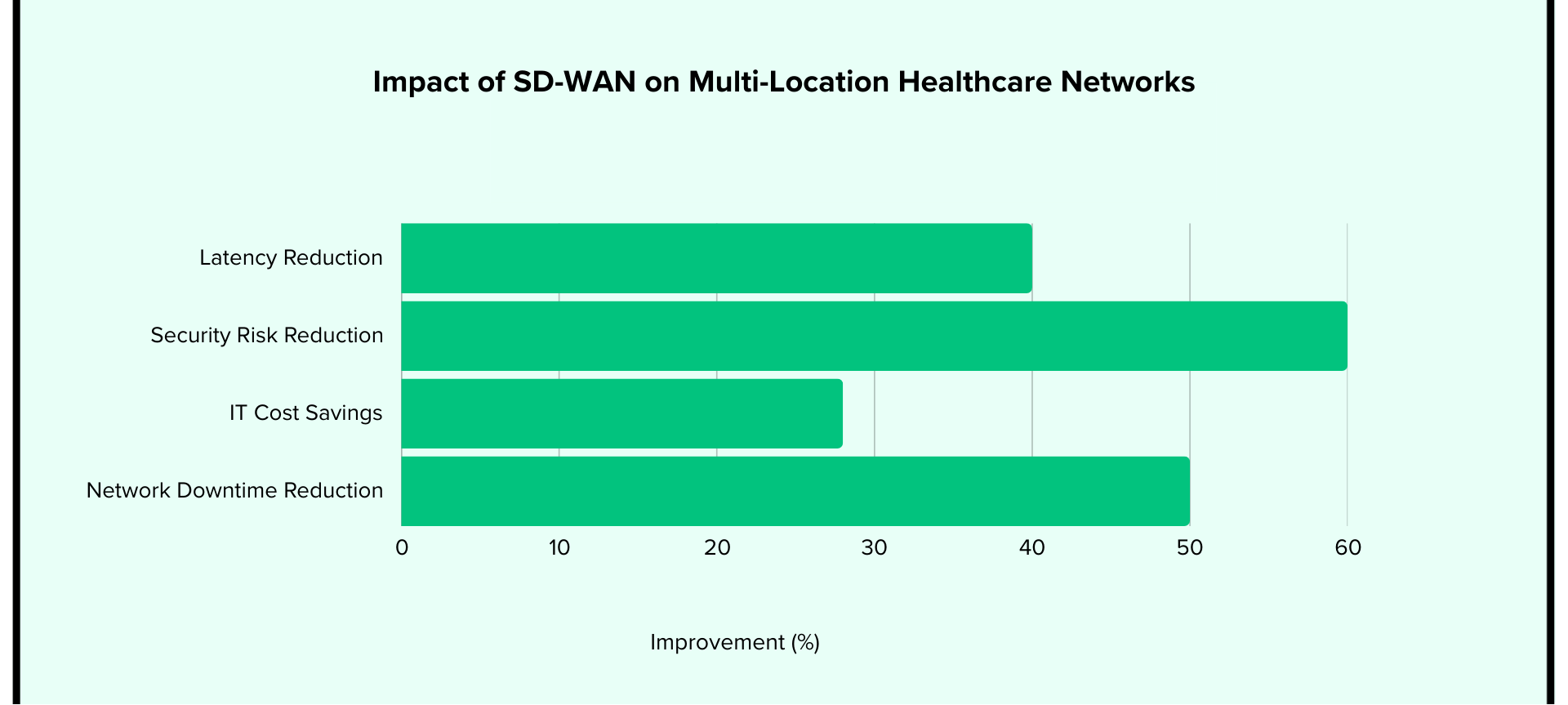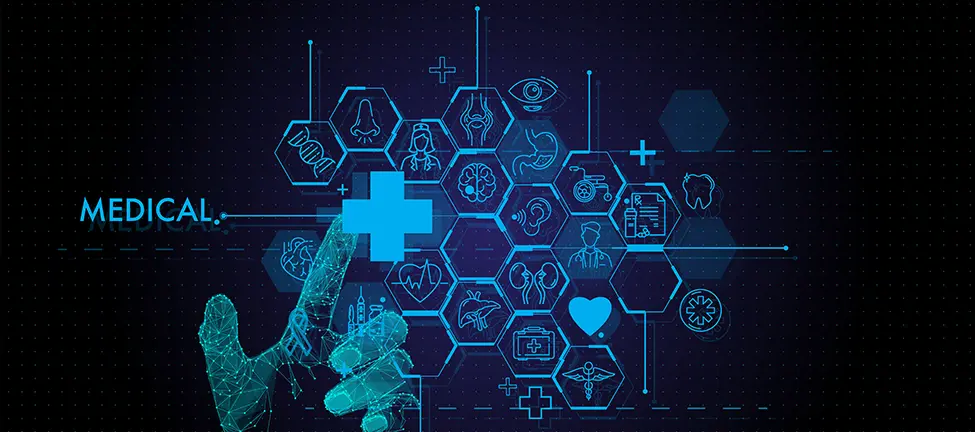A patient walks into a clinic in Pune for a routine check-up. Her medical history—diagnoses, prescriptions, lab reports—is stored in a cloud-based electronic health records system hosted in Bengaluru. The doctor accesses the system within seconds and prescribes an MRI at a partner facility in Hyderabad. The scan results automatically sync with the patient’s profile.
The process is seamless, almost invisible. But beneath it lies a fragile web—just one weak link, and the entire system falls apart.
For decades, India’s healthcare system has grappled with a fragmented digital infrastructure. Clinics and hospitals operate in silos, dependent on inconsistent network speeds, legacy systems, and expensive data transfer models. Inadequate connectivity forces doctors to rely on paperwork, delaying diagnoses and treatments. In a profession where minutes can mean the difference between life and death, inefficiencies are more than just an inconvenience; they are a fundamental flaw in healthcare delivery.
The Patchwork Problem: Why Traditional Networks Fail Healthcare
The problem is not limited to isolated clinics. The National Health Authority reports that nearly 30 per cent of healthcare institutions in India suffer from poor data connectivity, directly impacting patient safety. The issue is compounded by the growth of telemedicine, cloud-based diagnostics, and data-heavy medical imaging, all of which require secure and high-speed digital infrastructure.
A high-resolution MRI scan can generate up to 200 MB of data per image, requiring seamless transfer between radiology departments, specialists, and cloud storage. Traditional networking solutions, such as MPLS (Multiprotocol Label Switching), are struggling to meet these demands.
Challenges with Legacy MPLS Networks in Healthcare
- High Latency: Medical imaging, electronic health records (EHRs), and telemedicine sessions experience lag due to inefficient routing and network congestion.
- Security Vulnerabilities: The IBM Cost of a Data Breach Report 2023 found that healthcare breaches in India take an average of 328 days to detect and contain, often due to weak network security.
- Lack of Scalability: Expanding to new locations requires weeks of setup, increasing operational costs and delays.
- Expensive Bandwidth: Legacy networks require significant investments in infrastructure and ongoing maintenance.
As India moves toward a digitally connected healthcare ecosystem under initiatives like the Ayushman Bharat Digital Mission, the need for a smarter networking solution has never been greater.
SD-WAN: The Technology That Knows What Matters
SD-WAN is more than just a networking solution. It is an intelligent, self-aware digital infrastructure that ensures hospitals and clinics function smoothly, securely, and efficiently.
Key Benefits of SD-WAN in Healthcare
- Traffic Prioritisation: Medical applications like EHRs, telemedicine, and imaging transfers get prioritised bandwidth, ensuring real-time access.
- Cloud-Native Efficiency: Cisco Meraki SD-WAN dynamically routes data through the most efficient path, reducing latency by up to 40% compared to traditional MPLS.
- AI-Driven Security: Zero Trust Network Access (ZTNA) ensures that only authorised medical professionals can access critical patient data.
- Seamless Multi-Location Expansion: Clinics can deploy new branches in days, not weeks, with automated remote configurations.
- Built-In Resilience: Automated failover mechanisms ensure uninterrupted connectivity—even if a primary link fails, secondary networks take over seamlessly.
Case Study: How SD-WAN Improved Network Efficiency
A leading hospital chain in India recently transitioned from MPLS to SD-WAN to address persistent issues with latency, security, and scalability.
Challenges Faced Before SD-WAN Deployment:
- Medical imaging transfers took too long, leading to diagnostic delays.
- Telemedicine services frequently experience downtime due to network congestion.
- Security threats were increasing due to outdated network encryption.
Impact of SD-WAN Deployment:
- Latency in medical data transfers dropped by 38%, enabling faster diagnostics.
- Security incidents were reduced by 54%, thanks to AI-driven threat detection.
- IT costs fell by 28%, freeing up resources for patient care.
This shift highlights the operational and financial advantages of moving from legacy MPLS networks to an intelligent SD-WAN architecture.

The Economics of SD-WAN in Healthcare: Cost vs. ROI
Many healthcare institutions hesitate to adopt SD-WAN due to perceived high costs, but the financial case for adoption is strong.
The Cost of Inaction:
- Network Downtime Costs: A single minute of downtime costs hospitals between Rs. 75,000 and Rs. 1,50,000, factoring in patient rescheduling and operational delays.
- Cybersecurity Breaches: The average breach cost in India’s healthcare sector is between Rs 2-4 crore ($250,000-$500,000), with long-term reputational damage.
- Higher MPLS Maintenance Costs: MPLS networks require 30% more operational expenditure than cloud-based SD-WAN.
How SD-WAN Delivers ROI:
- IT Maintenance Cost Reduction: Up to 50% reduction in IT expenses by automating network management.
- Downtime Savings: Automated failover saves hospitals up to Rs. 20 lakh per year in operational costs.
- Scalability for New Clinics: Hospitals expanding into new locations can set up secure, high-speed connectivity in days, not weeks.
By reframing SD-WAN as an investment rather than an expense, healthcare IT leaders can justify its adoption to CFOs and decision-makers.
India’s Digital Health Push: The Role of SD-WAN in Ayushman Bharat Digital Mission
The Ayushman Bharat Digital Mission (ABDM) is working to create a unified, interoperable health ecosystem in India. But this vision depends on a secure and reliable network infrastructure.
How SD-WAN Supports ABDM Goals:
- Seamless Health Data Exchange: Secure, real-time sharing of patient records across hospitals, clinics, and diagnostic centers.
- Scalability for Rural and Urban Clinics: Cloud-native network management eliminates the need for costly MPLS expansion.
- Compliance with NDHM Standards: SD-WAN enforces data security, authentication, and privacy controls mandated by India’s healthcare regulations.
As more healthcare providers integrate with ABDM, SD-WAN will play a critical role in enabling secure, large-scale digital health services.
Why Proactive Data Systems is the Partner of Choice for Healthcare IT
Proactive Data Systems has been at the forefront of deploying enterprise-grade SD-WAN solutions for leading hospitals, diagnostic centers, and healthcare ITES firms in India.
Our expertise includes:
- Deploying Cisco Meraki SD-WAN across leading healthcare institutions.
- Enabling seamless inter-location medical data transfers with enterprise-grade security.
- Providing 24x7 managed services for healthcare networks.
The future of Indian healthcare is digital, and the backbone of that future is a secure, intelligent, and scalable network. To learn how Proactive Data Systems can transform your healthcare network, get in touch today.

